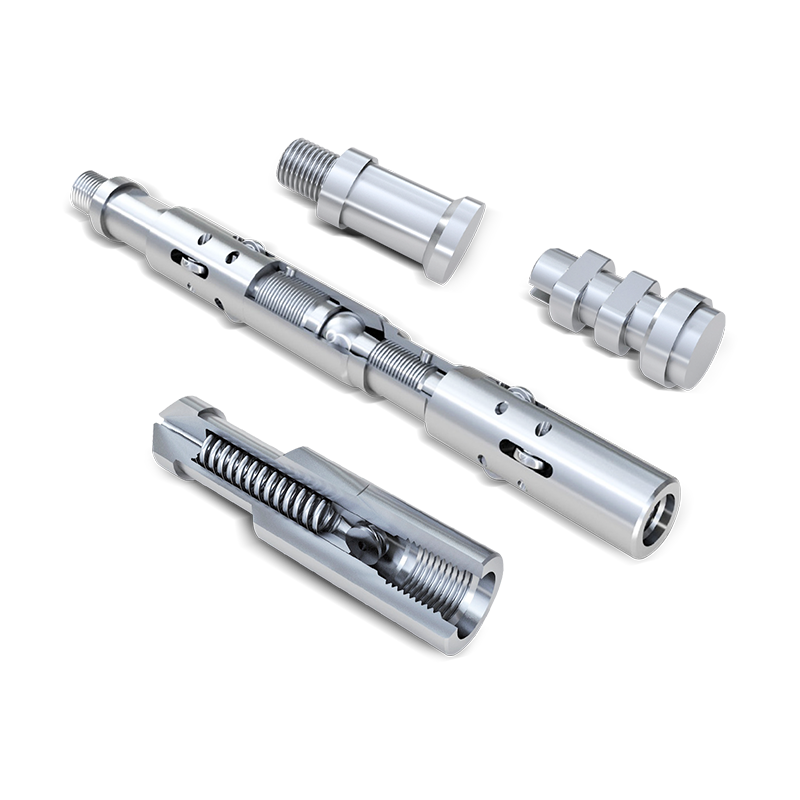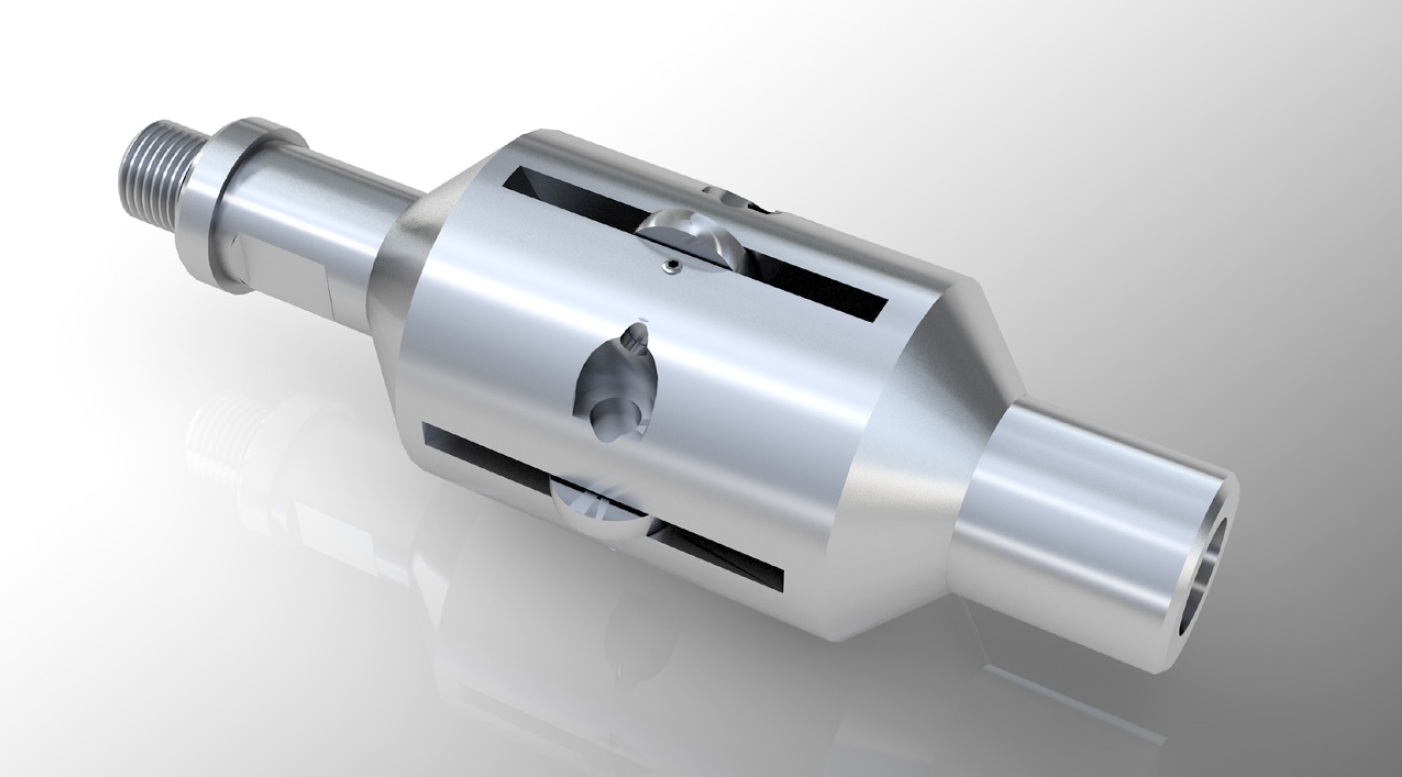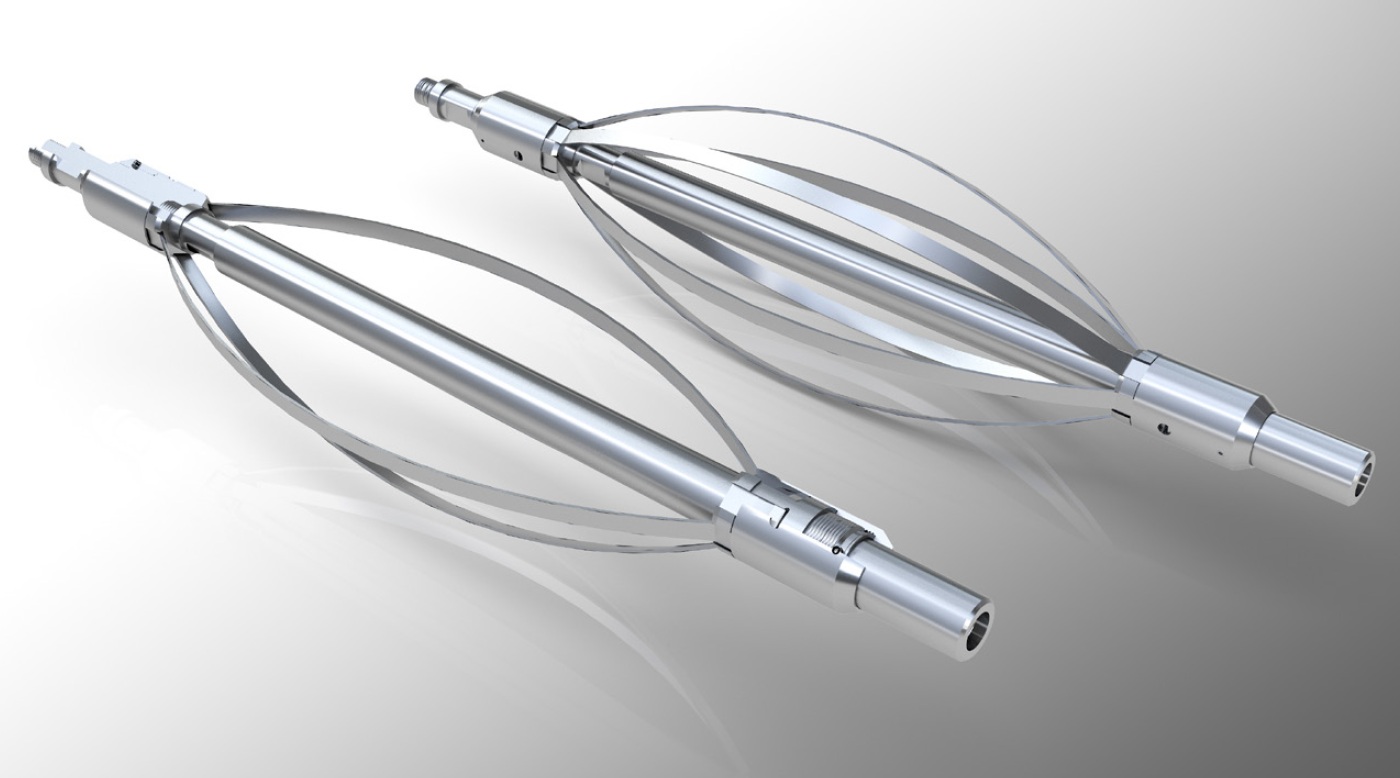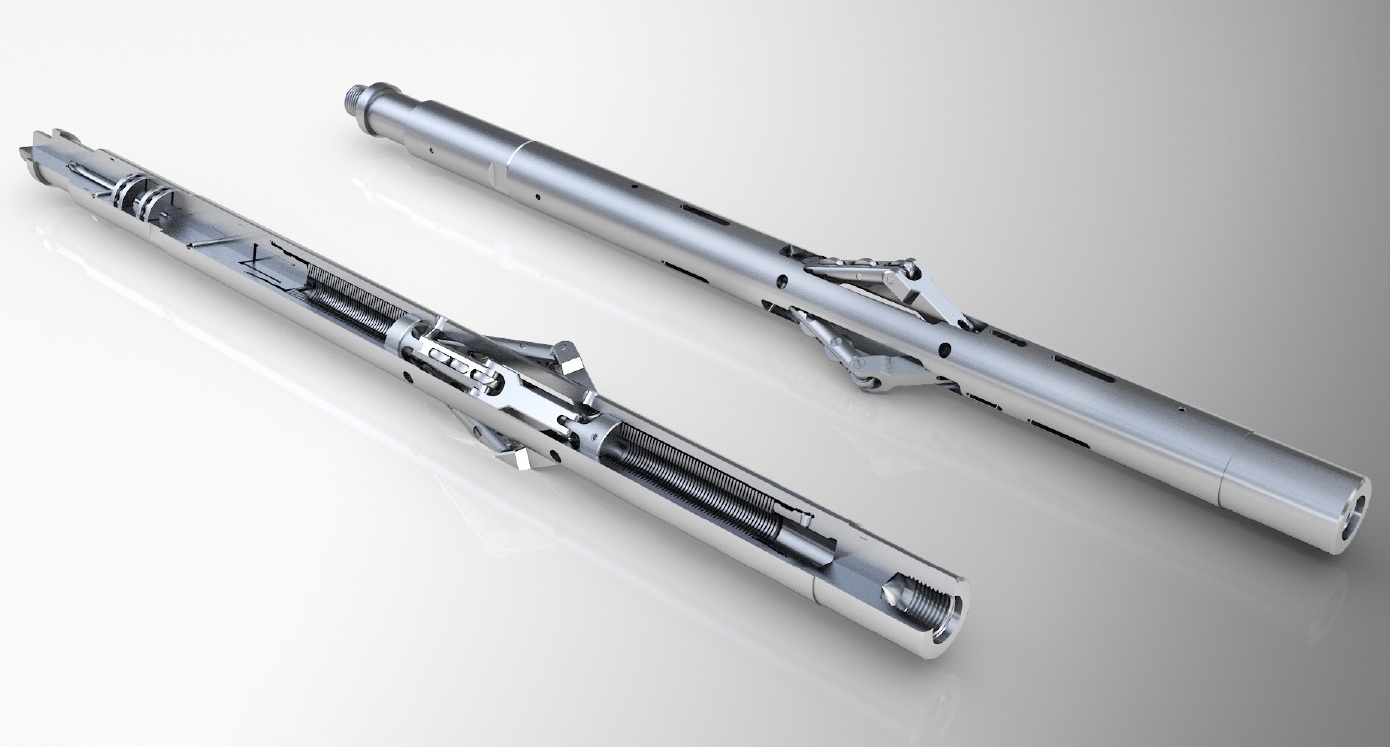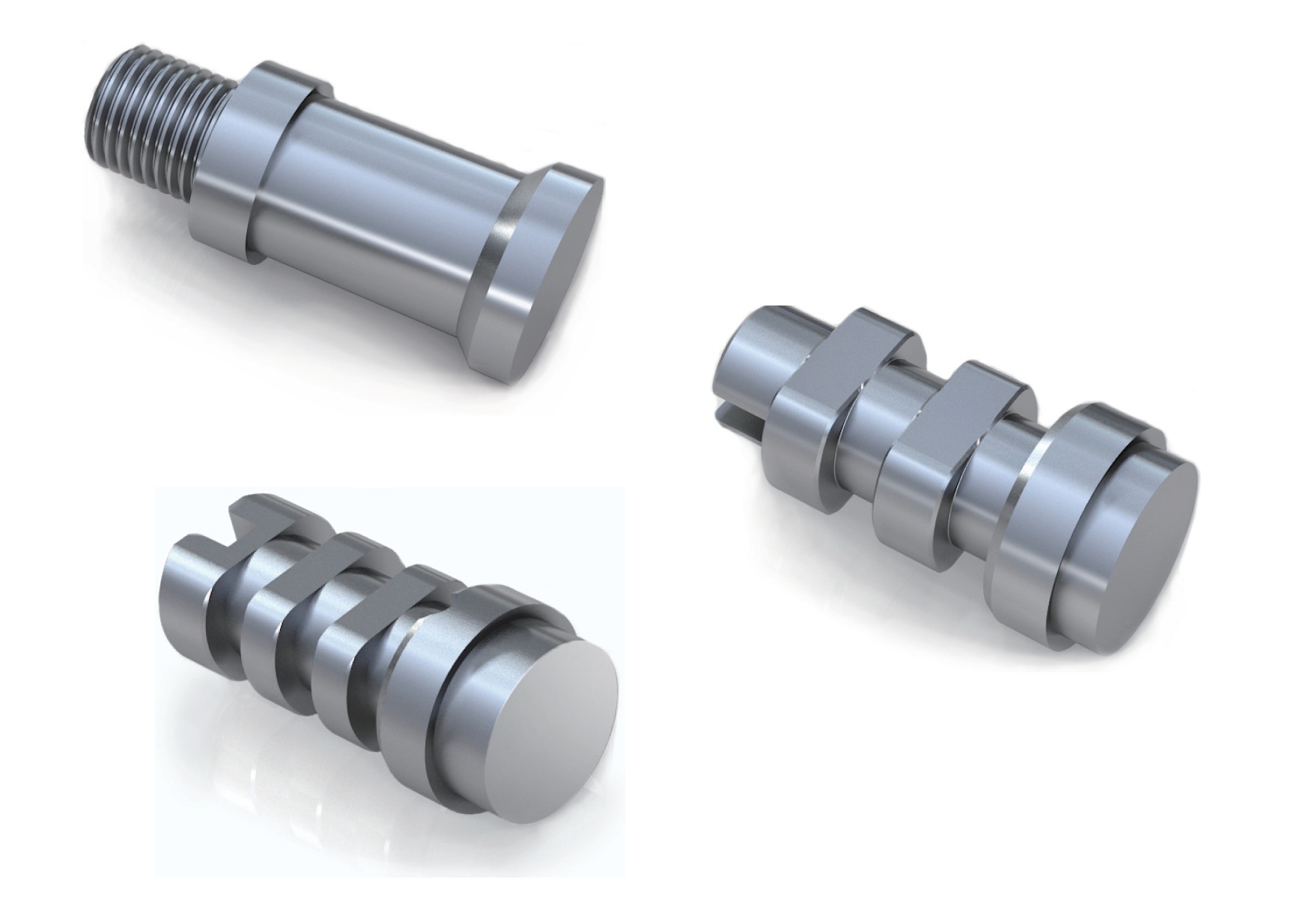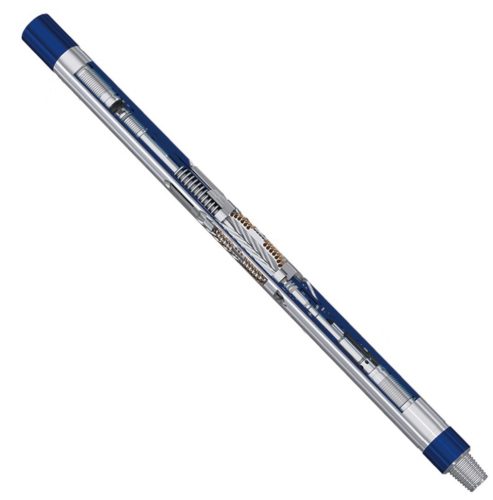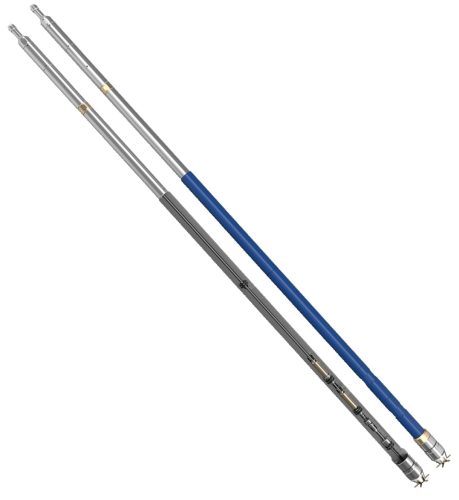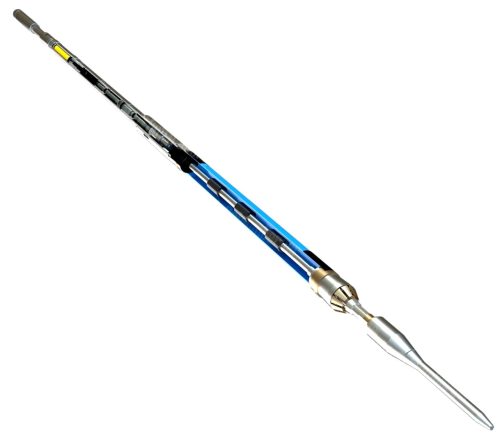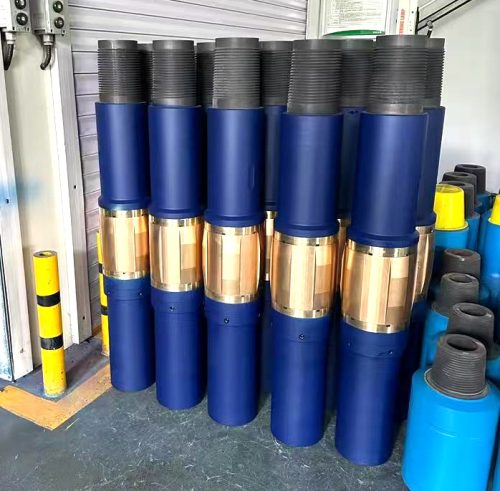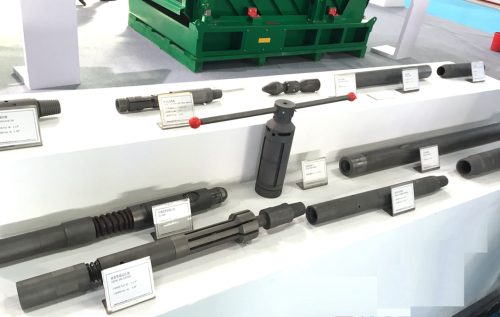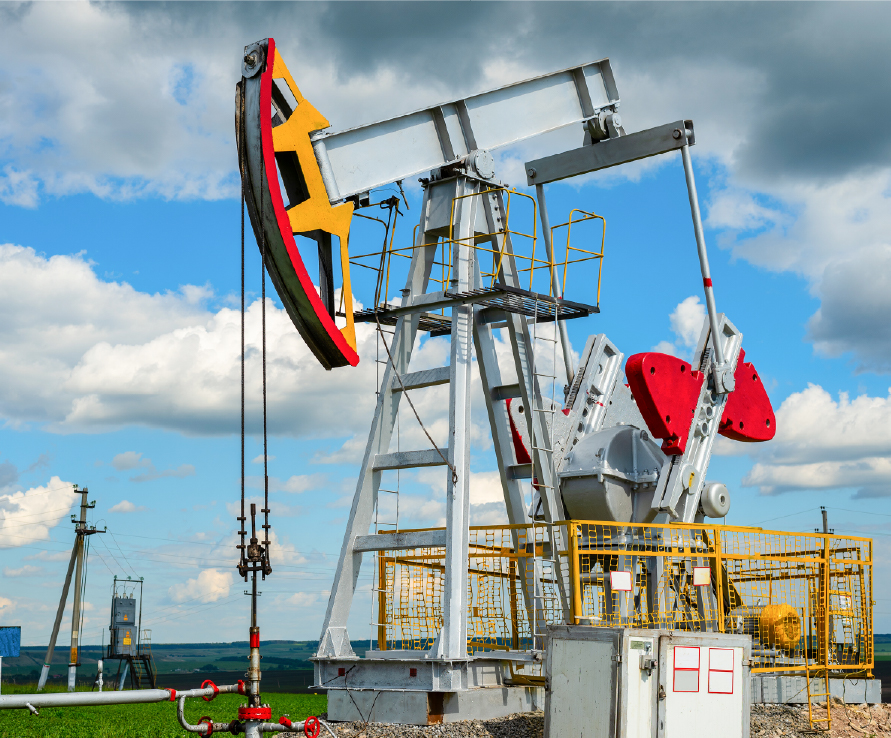Basic Tool String
Rope Socket
Pear Drop Design, is the uppermost component in a wireline tool string and forms an essential link between the tool string and the wire. The pear drop type incorporates a tapered plug (Pear Drop) which is grooved to accommodate the wireline. This acts against an opposite taper within the body retaining the wire.
Disc & Spring Design
Disc & Spring Design, is the uppermost component in a wireline tool string and forms an essential link between the tool string and the wire.
The Disc / Spring Type Rope is used with 0.092" -0.125"single strand solid wireline.
Weak Point
Weak Point,is designed for use with braided line where high pulling forces are anticipated. Internally the line is secured by means of an initiator clamp in conjunction with a tapered sleeve and slips. This configuration allows for very high line pull with minimum slippage. The tool also incorporates an emergency release feature that acts as a weak point should the tool string become stuck, allowing the upper portion of the rope socket to be retrieved with the braided line intact.
The weak point consists of a series of shear pins of pre-determined strength, which are sheared using a pre-determined over-pull.
Swivel Joint
Swivel Joint is installed directly below the rope socket to provide rotation of the tool string thereby preventing wireline twist or 'nesting' when used in conjunction with braided line. It incorporates Heavy-Duty Thrust Bearings for durability and reliability.
Wireline Stem / Sinker Bar
Standard Stem is used as weight to overcome stuffing-box packing friction, and well pressure on the cross-sectional area of the wireline. Stem can also transmit force either upward or downward to set or retrieve downhole controls. Size and weight of the stem are determined by the impact force required and the size of the downhole tools to be run or pulled. For normal conditions five feet of stem is used, made-up by combining two, three or five-foot lengths of standard stem.
Wireline Jars
Mechanical Link Jar, also known as Spang Jar, utilizes the weight of stems connected immediately above to deliver effective up and down stroke jarring impacts.
Mechanical Combination Tool string
Mechanical Combination Tool string is normally used where tool string length /height is a limitation A typical application would be running and pulling plugs from the tubing hanger in conventional or subsea wellheads where it is always desirable to close the upper swab valve in the event that the wireline is pulled from the rope socket or the tool string gets stuck. The mechanical combination Tool string incorporates a mechanical spring jar, accelerator, weight bar and optional integral rope socket in a compact design.
Accelerator
Standard Accelerator is used in conjunction with hydraulic or spring jars when jarring at shallow depths. The Wireline Accelerator assemble is run just below the rope socket of the tool string. Upward tension on the wireline compresses the springs within the accelerator, storing energy. When the jar fires, the stored energy is released, increasing the impact of the jar at the fish.
Knuckle Joint
Standard Knuckle Joint is a tool string accessory, used to provide flexibility within the wireline tool string. It is recommended to place a knuckle Joint immediately below the rope socket when the rope socket does not accommodate wireline twist. An added benefit is that both the upper and lower connections have fish necks.
Improved Wireline Knuckle Joint
When running in a deviated well bore it is normal to include a Knuckle Joint in the tool string to accommodate the curvature of the well bore. The inclusion of a conventional Knuckle Joint introduces a high load/high friction contact point within the well bore. Improved Wireline Knuckle Joint has been designed to overcome the problems that occur when running in high deviation well bores with conventional Knuckle Joints.
J-Slot Rotation Tool
J-Slot Rotating Tool is designed to rotate the tool string in a controlled manner. To operate the J-Slot Rotating Tool, simply sit the tool string down. As the tool is telescoped down it rotates to its next indexing. Subsequent up and down movements will continue to rotate the tool string. The J-Slot Rotation Tool can be used to loosen debris from around fishing necks and gas valves etc.
Shock Absorber
Shock Absorber is used in the wireline tool string to reduce the effects of shock when running delicate gauges etc. It is most effective when run directly above the gauges.
Wireline Crossovers
Type UN Crossover Adapter is designed to connect two incompatible connections (UN thread to UN thread of different size) in the tool string.
Auxiliary Tools
Fluted Centralizer
Fluted Centralizer is run to centralize the tool string where well deviation causes the running and pulling tools to lay off center. In addition to being a centralizer, it can also be used as a tubing drift.
Multi-Roller Wheel Fluted Centralizer
The Multi-Roller Wheel Fluted Centralizer is designed for use in highly deviated wells. The wheels incorporated in the design overcome friction, which can be caused by the tool string scraping against the tubing wall.
Bow Spring Centralizer
Bow Spring Centralizer is designed to assist in centralizing the tool string inside bore tubing. In addition to centralizing, this tool will also reduce tool string shock whilst running in the well. The Design of this Centralizer enables one tool to centralize in a large range of tubing ID's. It can provide good centralization in conventional and deviated well.
Adjustable Spring Roller Centralizer
Adjustable Spring Roller Centralizer, is capable of providing high centralizing loads. Loads taken by the arms are fully adjustable, to support individual tool string configurations in deviated wells. A swivel unit is incorporated into the top sub in order to prevent any torsional force from being transmitted into the wire.
Roller Ball Sub
The Roller Ball Sub is designed for use in highly deviated wells. The design offers a 360-degree wheel contact, reducing the friction caused by contact with the tubing wall. The Roller Ball Sub can be incorporated at various points of the string to create a near frictionless tool string operation. It is also obtainable as part of the standard tool string i.e. Stem, Jars, Bailer ect.
Sand Bailers
Sand Pump Bailer is designed to remove sand and small debris accumulated on top of subsurface equipment within the well that is obstructing the recovery of the equipment by regular wireline operations. It consists a piston within a cylinder. Gentle jarring up and down of the wireline causes the piston suck debris into the cylinder for retrieval. A ball check valve then prevents the debris from being lost.
Tubing Swage
Tubing Swage is used for the swaging of collapsed tubing to ensure the smooth of wireline run flow control devices.
Tubing Cutters
Gauge Cutter serves as a tubing scraper that remove debris from the tubing wall, it can also be used to check tubing ID, locate nipple ID and No-Go and gauge the total depth of the completion tubing string. It is a good practice to run a Tubing Gauge Cutter prior to any operations carried out in the well to ensure smooth unimpeded run.
Wireline Scratcher
Wireline Scratcher is used to dislodge scale, paraffin wax or packing debris. A wire size of up to 3/16"is looped (or cut to suitable length) and inserted in holes and retained with locking screws (Wire not supplied).
Wireline Brush
Wireline Brush is used to dislodge scale, paraffin wax or packing debris. A wire size of up to 3/16”is looped (or cut to suitable lengths) and inserted in holes and retained with locking screws.
Tubing End Locator
Standard Tubing End Locator is designed to locate & measure depth of tubing end at completion to provide a cross reference check of the tubing tally. Normally attached to the end of the tool string It is run through the production string and enter the casing.
Anti Blow-Up Tool
Anti Blow-Up Tool is designed to be used as part of the tool string when intervention operation took place in a multizone completion well where high cross flow or differential pressures is present. In the situation that the differential flow rates between zones push the tool string upwards, the two arms on the tool will throw outward and lock into the tubing wall preventing the tool string from blowing up.
Wireline Tubing Perforator
Wireline Tubing Perforator is a non-explosive mechanical punch designed to perforate holes in standard and heavy wall production tubing that is under pressure. It can be deployed into the well by conventional method, and commonly used in the condition that Sliding Side Door (SSD) becomes stuck or malfunction and the punched holes will help with the well kill operation by circulating 'kill fluid' or 'kill mud' into the production tubing.
Wireline Wirefinder
Wireline Wirefinder is used to collect and ball up broken wire or cable down hole prior to running the Wireline Grab for retrieval.
Wireline Grab
Wireline Grab is a wireline fishing tool designed to retrieve wire or cable that has broken and fell into the wellbore.
Wireline Snipper
Wireline Snipper is designed to retrieve stuck wireline above rope socket with the condition that the wire is still accessible at surface. The weight of the tool itself upon free fall impact complete the wire cutting and crimping at the same time.

